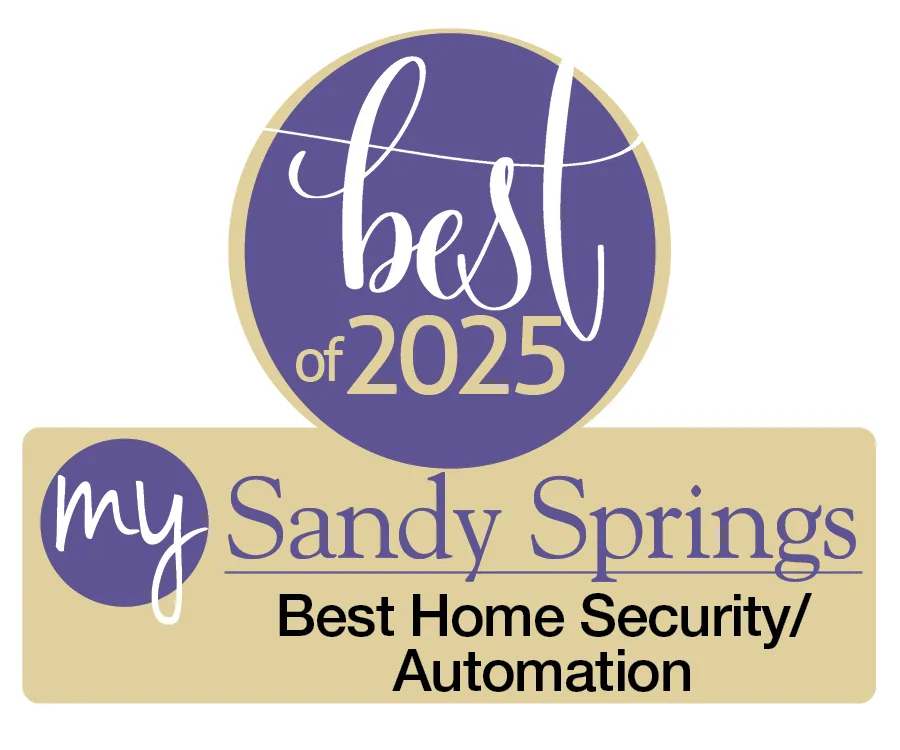Home automation refers to the use of technology to control and automate various household tasks and functions. It involves the integration of smart devices and systems that can be remotely controlled and monitored, providing homeowners with convenience, security, and energy efficiency. The concept of home automation has been around for decades, but it has gained significant popularity in recent years due to advancements in technology and the increasing demand for smart home devices.
The history of home automation can be traced back to the early 20th century when simple devices like timers and thermostats were used to automate certain tasks. However, it wasn’t until the 1970s that the concept of a fully automated home started to take shape. The introduction of X10, a communication protocol for home automation, paved the way for the development of more advanced systems that could control lighting, heating, and other household functions.
In recent years, home automation has become increasingly popular among homeowners. The rise of smartphones and the Internet of Things (IoT) has made it easier than ever to control and monitor smart devices from anywhere in the world. According to a report by Statista, the global smart home market is expected to reach a value of $141 billion by 2023. This growing popularity can be attributed to the numerous benefits that home automation offers, including convenience, security, and energy efficiency.
Key Takeaways
- Home automation is on the rise, with smart home devices leading the way.
- New trends in home automation include voice control and increased integration.
- Advantages of home automation include convenience, security, and energy efficiency.
- Artificial intelligence plays a key role in the future of home automation.
- Challenges and limitations of home automation include cost and compatibility issues.
Smart Home Devices: The Key to Home Automation
Smart home devices are at the core of home automation. These devices are equipped with sensors, processors, and wireless connectivity that allow them to communicate with each other and with the homeowner. There are various types of smart home devices available on the market today, each serving a specific purpose in automating different aspects of a household.
One common type of smart home device is a smart thermostat. These devices can be programmed to adjust the temperature based on the homeowner’s preferences or schedule. They can also be controlled remotely using a smartphone app, allowing homeowners to save energy and reduce utility bills by optimizing their heating and cooling systems.
Another popular smart home device is a smart lighting system. These systems allow homeowners to control the lighting in their homes using voice commands or smartphone apps. They can create custom lighting schedules, adjust the brightness and color of the lights, and even sync them with other smart devices for added convenience.
Smart security systems are also gaining popularity among homeowners. These systems include devices such as smart door locks, security cameras, and motion sensors that can be monitored and controlled remotely. They provide homeowners with peace of mind by allowing them to keep an eye on their homes and receive real-time alerts in case of any suspicious activity.
Smart home devices work by connecting to a central hub or a home automation controller, which acts as the brain of the system. The hub communicates with the devices using wireless protocols such as Wi-Fi, Zigbee, or Z-Wave. It also connects to the homeowner’s smartphone or tablet, allowing them to control and monitor the devices from anywhere.
Home Automation Trends: What’s New and What’s Next?
Home automation is an ever-evolving field, with new technologies and trends emerging all the time. One of the latest trends in home automation is voice control. Devices like Amazon Echo and Google Home have become increasingly popular, allowing homeowners to control their smart devices using voice commands. This hands-free approach to home automation offers a new level of convenience and accessibility.
Another trend in home automation is the integration of artificial intelligence (AI) technology. AI-powered smart home devices can learn from the homeowner’s habits and preferences, making intelligent decisions and adjustments based on their needs. For example, a smart thermostat equipped with AI can learn when the homeowner is likely to be home and adjust the temperature accordingly, saving energy without sacrificing comfort.
In terms of upcoming technologies, one area that holds great promise is the Internet of Things (IoT). The IoT refers to the network of interconnected devices and systems that can communicate with each other and exchange data. In the context of home automation, this means that smart devices can work together seamlessly to automate various tasks and functions. For example, a smart home security system can communicate with a smart lighting system to turn on the lights when motion is detected, creating a deterrent for potential intruders.
Looking into the future, there are several predictions for the future of home automation. One prediction is that homes will become even smarter and more interconnected, with every aspect of the household being automated and controlled remotely. For example, appliances like refrigerators and washing machines could be equipped with sensors and connectivity, allowing homeowners to monitor their energy usage and receive alerts when maintenance is needed.
Another prediction is that home automation will become more personalized and tailored to individual needs. AI-powered systems will be able to learn from the homeowner’s habits and preferences, automatically adjusting settings and making recommendations based on their unique lifestyle. This level of personalization will not only enhance convenience but also improve energy efficiency by optimizing the use of resources.
Advantages of Home Automation: Convenience, Security, and Energy Efficiency
One of the main advantages of home automation is the convenience it offers. With smart home devices, homeowners can control and monitor various aspects of their homes from anywhere in the world using their smartphones or tablets. They can turn on/off lights, adjust the temperature, lock/unlock doors, and even monitor security cameras remotely. This level of control allows homeowners to save time and effort by automating routine tasks and functions.
Home automation also plays a crucial role in enhancing home security. Smart security systems can provide homeowners with real-time alerts in case of any suspicious activity, allowing them to take immediate action. They can also deter potential intruders by automatically turning on lights or sounding an alarm when motion is detected. Additionally, smart door locks can provide an extra layer of security by allowing homeowners to lock and unlock their doors remotely, eliminating the need for physical keys.
Another advantage of home automation is its potential to save energy and reduce utility bills. Smart thermostats, for example, can optimize the heating and cooling systems based on the homeowner’s preferences and schedule, reducing energy waste. Smart lighting systems can also save energy by automatically turning off lights when no one is in the room or adjusting the brightness based on natural light levels. By optimizing energy usage, homeowners can not only save money but also reduce their carbon footprint.
The Role of Artificial Intelligence in Home Automation
Artificial intelligence (AI) is a branch of computer science that focuses on creating intelligent machines that can perform tasks that would typically require human intelligence. In the context of home automation, AI plays a crucial role in making smart devices more intelligent and responsive to the homeowner’s needs.
AI is used in home automation to analyze data from various sensors and devices, learn from patterns and behaviors, and make intelligent decisions and adjustments. For example, an AI-powered smart thermostat can learn when the homeowner is likely to be home based on their daily routine and adjust the temperature accordingly. It can also analyze weather data to optimize energy usage and provide recommendations for energy-saving settings.
There are several examples of AI-powered smart home devices available on the market today. One example is the Amazon Echo with Alexa, a voice-controlled smart speaker that uses AI to understand and respond to voice commands. With Alexa, homeowners can control their smart devices using voice commands, play music, get weather updates, and even order products online.
Another example is the Nest Learning Thermostat, which uses AI algorithms to learn from the homeowner’s temperature preferences and schedule. Over time, it can automatically adjust the temperature based on these preferences, saving energy without sacrificing comfort. The Nest Learning Thermostat also provides homeowners with detailed energy usage reports and recommendations for further energy savings.
Smart Home Integration: Bringing It All Together
Smart home integration is the process of connecting and coordinating different smart devices and systems to work together seamlessly. It involves the integration of various protocols, such as Wi-Fi, Zigbee, or Z-Wave, to ensure that the devices can communicate with each other and with the homeowner’s smartphone or tablet.
The importance of smart home integration cannot be overstated. Without integration, smart devices would operate in isolation, requiring separate apps and controls for each device. This would not only be inconvenient but also limit the potential benefits of home automation.
To integrate different smart home devices, homeowners can use a central hub or a home automation controller. These devices act as the brain of the system, allowing homeowners to control and monitor all their smart devices from a single interface. They can also create custom automation routines and schedules, allowing different devices to work together based on predefined rules.
One of the benefits of smart home integration is the ability to create custom automation routines. For example, homeowners can create a routine that automatically turns on the lights, adjusts the temperature, and plays their favorite music when they arrive home. They can also create routines that simulate occupancy when they are away, turning on lights at random intervals to deter potential intruders.
Another benefit of smart home integration is the ability to control multiple devices using voice commands. With integrated systems like Amazon Echo or Google Home, homeowners can control their smart devices using voice commands, eliminating the need for physical controls or smartphone apps. This hands-free approach to home automation offers a new level of convenience and accessibility.
The Future of Home Automation: Predictions and Possibilities
The future of home automation holds great promise, with numerous predictions and possibilities on the horizon. One prediction is that homes will become even smarter and more interconnected, with every aspect of the household being automated and controlled remotely. For example, appliances like refrigerators and washing machines could be equipped with sensors and connectivity, allowing homeowners to monitor their energy usage and receive alerts when maintenance is needed.
Another prediction is that home automation will become more personalized and tailored to individual needs. AI-powered systems will be able to learn from the homeowner’s habits and preferences, automatically adjusting settings and making recommendations based on their unique lifestyle. This level of personalization will not only enhance convenience but also improve energy efficiency by optimizing the use of resources.
In terms of possibilities, there are several new technologies and innovations that could revolutionize home automation in the future. One possibility is the integration of augmented reality (AR) technology into smart home devices. With AR, homeowners could use their smartphones or smart glasses to visualize and interact with their smart devices in real-time, making it easier to control and monitor them.
Another possibility is the development of self-learning systems that can adapt and improve over time. These systems would use AI algorithms to analyze data from various sensors and devices, learn from patterns and behaviors, and make intelligent decisions and adjustments. For example, a self-learning lighting system could automatically adjust the brightness and color of the lights based on the homeowner’s preferences and natural light levels.
Challenges and Limitations of Home Automation
While home automation offers numerous benefits, it also comes with its fair share of challenges and limitations. One common challenge is the complexity of setting up and configuring smart home devices. Integrating different devices from different manufacturers can be a daunting task, requiring technical knowledge and troubleshooting skills. This complexity can discourage some homeowners from adopting home automation.
Another challenge is the interoperability of different smart devices. Not all devices use the same communication protocols or standards, making it difficult for them to communicate with each other. This lack of interoperability can limit the potential benefits of home automation and require homeowners to use multiple apps or controls for different devices.
In terms of limitations, one limitation of current home automation technologies is their reliance on a stable internet connection. Without a reliable internet connection, smart devices may not be able to communicate with each other or with the homeowner’s smartphone or tablet. This can be a problem in areas with poor internet coverage or during power outages.
Another limitation is the potential for privacy and security risks. Smart devices are connected to the internet, making them vulnerable to hacking and unauthorized access. Homeowners need to take precautions to secure their smart devices, such as using strong passwords, keeping their software up to date, and regularly monitoring their network for any suspicious activity.
To overcome these challenges and limitations, homeowners can follow best practices for setting up and configuring smart home devices. They can also choose devices that use open standards and protocols, ensuring interoperability and compatibility with other devices. Additionally, homeowners should prioritize security by using strong passwords, enabling two-factor authentication, and regularly updating their device’s software.
Home Automation and Sustainability: A Greener Future
Home automation has the potential to contribute to sustainability by promoting energy efficiency and reducing carbon footprint. By optimizing the use of resources, homeowners can reduce their energy consumption and save money on utility bills.
One way home automation can contribute to sustainability is through the use of smart thermostats. These devices can learn from the homeowner’s temperature preferences and schedule, automatically adjusting the temperature based on these preferences. By optimizing the heating and cooling systems, homeowners can reduce energy waste and save money on heating and cooling costs.
Another way home automation can promote sustainability is through the use of smart lighting systems. These systems can automatically turn off lights when no one is in the room or adjust the brightness based on natural light levels. By reducing unnecessary energy consumption, homeowners can save energy and reduce their carbon footprint.
There are also examples of sustainable smart home devices available on the market today. For example, there are smart power strips that can detect when a device is in standby mode and automatically cut off power to it, eliminating vampire power. There are also smart water sprinkler systems that can adjust watering schedules based on weather conditions, reducing water waste.
Overall, home automation has the potential to contribute to a greener future by promoting energy efficiency and reducing carbon footprint. By optimizing the use of resources and reducing waste, homeowners can not only save money but also make a positive impact on the environment.
Embracing the Smart Home Revolution
In conclusion, home automation is on the rise, with more and more homeowners embracing the smart home revolution. The increasing popularity of smart home devices and the advancements in technology have made it easier than ever to control and automate various household tasks and functions.
Smart home devices are at the core of home automation, allowing homeowners to control and monitor various aspects of their homes from anywhere in the world. These devices work by connecting to a central hub or a home automation controller, which acts as the brain of the system.
The future of home automation holds great promise, with numerous predictions and possibilities on the horizon. From augmented reality to self-learning systems, there are several new technologies and innovations that could revolutionize home automation in the future.
While home automation offers numerous benefits, it also comes with its fair share of challenges and limitations. From complexity to interoperability issues, homeowners need to be aware of these challenges and take precautions to overcome them.
Overall, home automation has the potential to enhance convenience, security, and energy efficiency in our homes. By embracing the smart home revolution, homeowners can enjoy the convenience of controlling various aspects of their homes with just a few taps on their smartphones or voice commands. With home automation, they can easily adjust the temperature, turn on/off lights, lock/unlock doors, and even monitor their homes remotely. This not only saves time and effort but also provides a sense of security as homeowners can keep an eye on their property even when they are away. Additionally, home automation systems can help reduce energy consumption by automatically adjusting thermostats and lighting based on occupancy and natural light levels. This not only lowers utility bills but also contributes to a more sustainable lifestyle. Overall, embracing home automation technology can greatly improve the quality of life for homeowners by making their homes more convenient, secure, and energy-efficient.
FAQs
What is home automation?
Home automation refers to the use of technology to control and automate various household appliances and systems, such as lighting, heating, ventilation, air conditioning, security, and entertainment.
What are the benefits of home automation?
Home automation offers several benefits, including increased convenience, improved energy efficiency, enhanced security, and greater comfort and control over your home environment.
What are some popular home automation trends?
Some popular home automation trends include voice-activated assistants, smart thermostats, automated lighting systems, security cameras, and smart home hubs that can control multiple devices.
What is the future of home automation?
The future of home automation is expected to involve even more advanced technologies, such as artificial intelligence, machine learning, and the Internet of Things (IoT), which will enable greater automation, personalization, and integration of various home systems.
What are some challenges associated with home automation?
Some challenges associated with home automation include the cost of installation and maintenance, the need for reliable and secure connectivity, and the potential for privacy and security risks if not properly secured.











